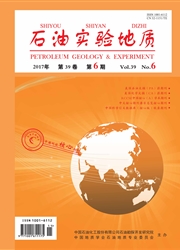

 中文摘要:
中文摘要:
北部湾盆地是典型的裂谷盆地,整体上可以划分为15个洼陷和早衰型、继承型、晚成型3种洼陷类型,15个洼陷可定性评价划分为四级。继承型洼陷是烃源岩分布和发育最有利的洼陷类型,其控制了富生烃洼陷的发育和分布;富生烃洼陷控制了油气的平面分布.已发现的油气藏均分布在富生烃洼陷的周缘。断裂及其活动性控制了油气藏的类型和垂向分布,油气藏主要以断裂封堵的油气藏为主,并沿主要断裂分布。沿长期继承性活动的断裂,形成“垂向多层系、多类型油藏叠置,横向沿断层分布”的复式油气聚集模式;对于早期活动强,后期活动弱的断裂,油气主要在深层流沙港组三段聚集,形成深层断层反向遮挡的油气聚集模式。
 英文摘要:
英文摘要:
The Beibuwan Basin is a typical rift basin. It is divided into 15 sub-sags of 3 types (presenile, inhe- rited and late-formed). These 15 sub-sags are evaluated as 4 grades. The inherited sub-sags are most favorable for source rock generation and distribution. The discovered reservoirs are mainly located around petroliferous sub- sags which are controlled by the inherited sub-sags. Faults control the type and vertical distribution of reservoirs which are mainly sealed by faults and distribute along main faults. A complex hydrocarbon accumulation model, which is superimposed vertically and distributed along faults horizontally, is developed along inherited long-term active faults. In the presenile sub-sags, petroleum mainly accumulates in the 3rd member of the Liushagang For- mation and is sealed by antithetic faults.
 同期刊论文项目
同期刊论文项目
 同项目期刊论文
同项目期刊论文
 期刊信息
期刊信息
